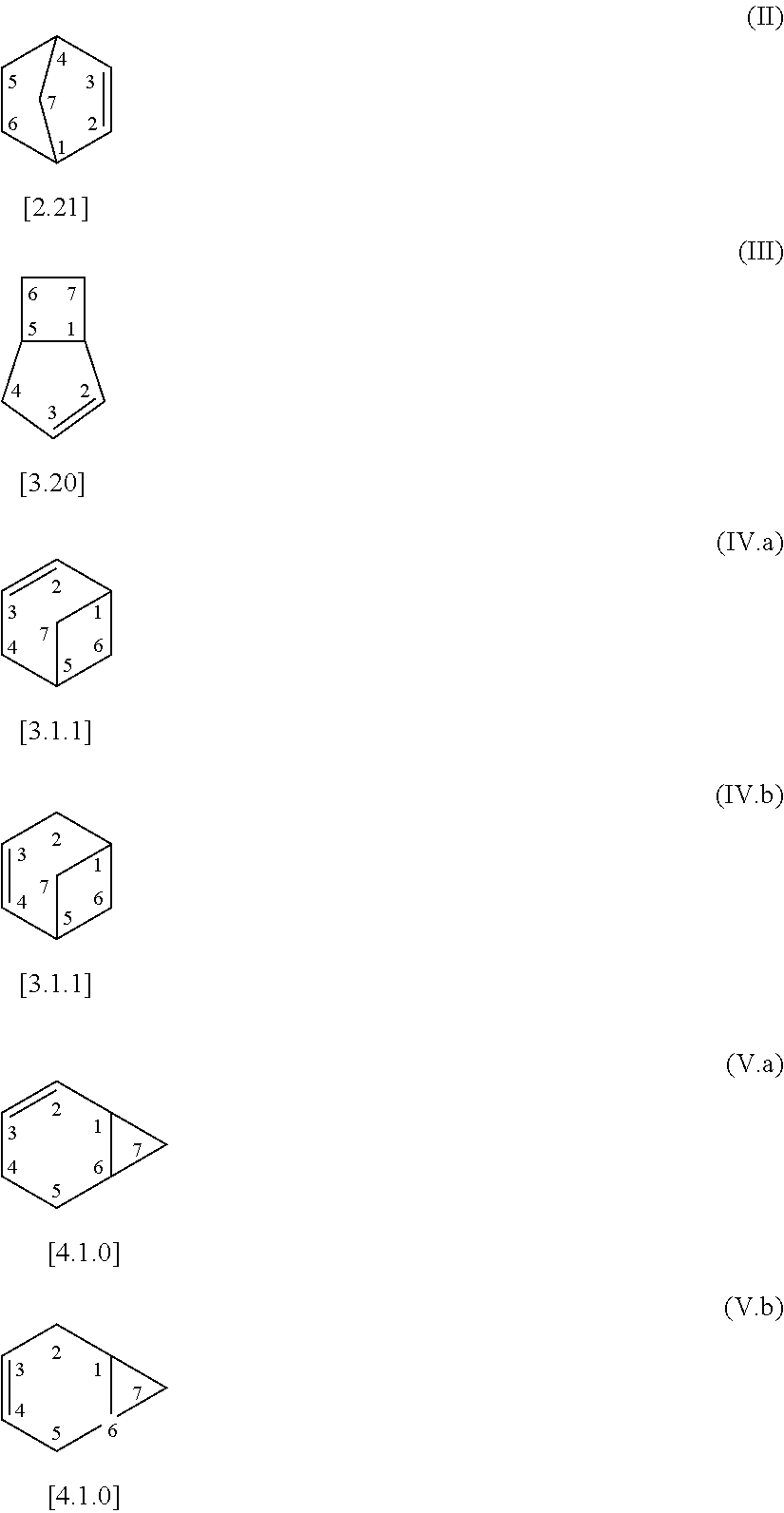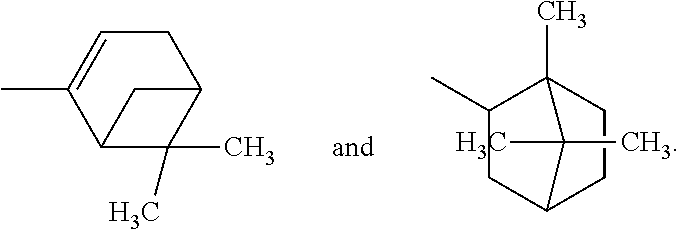Rheology modifier polymer
a polymer and modifier technology, applied in the field of rheology modifier polymers, can solve the problems of undesired large changes in rheological properties, undesired large changes in high sensitivity to relatively small variations in ph, electrolyte concentration, and the amount of polymer used, etc., to achieve non-zero yield strength, impart non-zero yield strength, and impart
- Summary
- Abstract
- Description
- Claims
- Application Information
AI Technical Summary
Benefits of technology
Problems solved by technology
Method used
Image
Examples
examples 1-3
[0307]The polymers of Examples 1, 2 and 3 were each made according to the procedure set forth below.
[0308]Water and a sulfated alcohol ethoxylate (Rhodapex AB20, Rhodia Inc.) were charged to a reaction vessel and heated to about 65° C., while purging with N2. A N2 blanket was maintained throughout each run. When the temperature reached about 65° C., a 25% of Initiator solution and 2% of monomer emulsion were added to the reaction vessel. The temperature was then maintained at about 65° C. for about 15 minutes. The remaining monomer emulsion and initiator solution were fed into the reaction vessel at a steady rate over 3 hours. Once the monomer and initiator feeds were completed, the contents of the reaction vessel were maintained at about 65° C. for about 1 hour and then a chaser solution consisting of t-butylperoxy benzoate added to the reaction vessel in one shot, followed by continuous addition of erythorbic acid solution over 30 minutes, was introduced to the reaction vessel. On...
examples f4-1
to F4-7
[0340]The 2-in-1 shampoo compositions of F4-1 to F4-7 were made as follows: Part A of the shampoo was prepared by adding the polymer latex of Example 1 to deionized water under moderate agitation. Sodium laureth-2EO sulfate (“SLES”, as Rhodapex ESB 3 / A2) was added, followed by slow addition of aqueous sodium hydroxide (15%) to a pH of from 9 to 10. Cocamidopropylbetaine (“CAPB”, as Mirataine BET C-30) was then added, and formulation pH was adjusted with aqueous citric acid (15%) to 6.5. Part B of the shampoo was made by sprinkling in guar hydroxypropyltrimonium chloride (Jaguar Excel) in deionized water under agitation. Once the cationic guar is completely dispersed, the pH of part B was adjusted between 4 and 5 with aqueous citric acid (15%). Part B was admixed to Part A, and preservative, sodium chloride were added. Final formulation pH was adjusted to 6.5 with aqueous citric acid (15%). Compositions are given in TABLE XII below in as pbw of each ingredient per 100 pbw of t...
examples f5-1
to F5-5
[0344]The 2-in-1 Shampoo compositions F5-1 to F5-5 were prepared as follows. Part A of the shampoo was prepared by adding the polymer latex of Example 1 or SF-1 polymer, to deionized water under moderate agitation. Sodium laureth-2EO sulfate (“SLES”, Rhodapex ESB 3 / A2) was added, followed by slow addition of aqueous sodium hydroxide (15%) to a pH of from 6.5 to 10. Cocamidopropylbetaine (“CAPB”, Mirataine BET C-30) was then added, and formulation pH was adjusted with aqueous citric acid (15%) to 6.5. Part B was prepared by adding Polyquaternium-7 (“PQ-7”, as Mirapol 550) in deionized water under agitation. Part B was admixed to Part A, and preservative, sodium chloride were added. Final formulation pH was adjusted to 6.5 with aqueous citric acid (15%). The ingredients and their relative amounts are listed in TABLE XIV below, as pbw of the active ingredient per 100 pbw of the shampoo composition. The percent transmittance (%), as measured at 600 nm in a 10×10 mm cell and visco...
PUM
| Property | Measurement | Unit |
|---|---|---|
| yield strength | aaaaa | aaaaa |
| yield strength | aaaaa | aaaaa |
| pressure | aaaaa | aaaaa |
Abstract
Description
Claims
Application Information
 Login to View More
Login to View More - R&D
- Intellectual Property
- Life Sciences
- Materials
- Tech Scout
- Unparalleled Data Quality
- Higher Quality Content
- 60% Fewer Hallucinations
Browse by: Latest US Patents, China's latest patents, Technical Efficacy Thesaurus, Application Domain, Technology Topic, Popular Technical Reports.
© 2025 PatSnap. All rights reserved.Legal|Privacy policy|Modern Slavery Act Transparency Statement|Sitemap|About US| Contact US: help@patsnap.com



